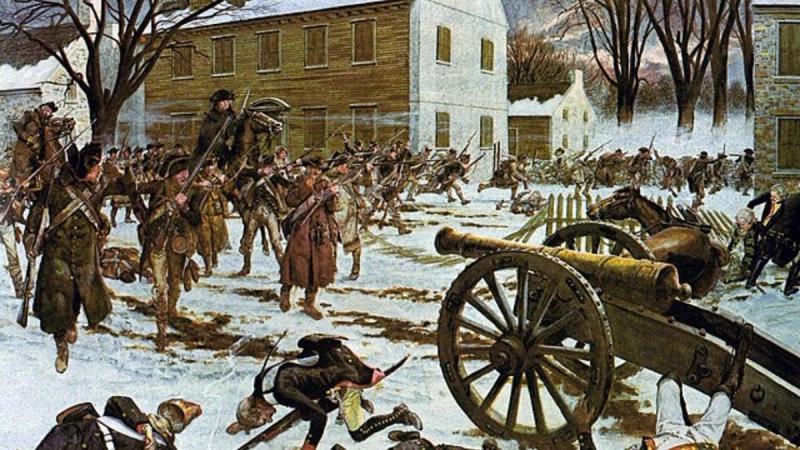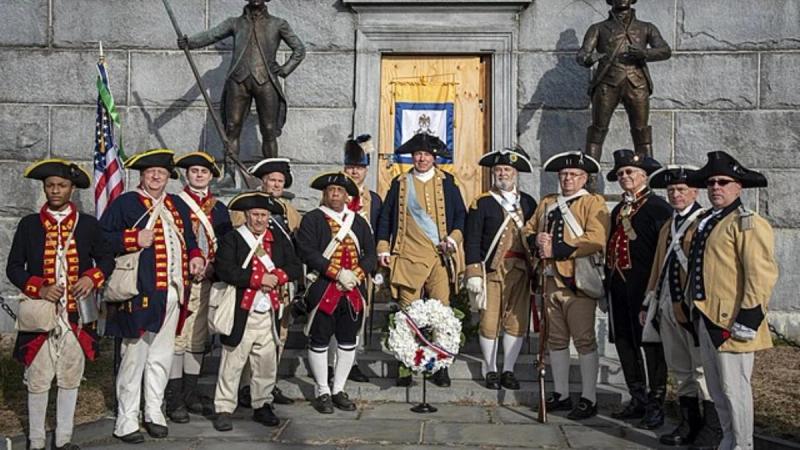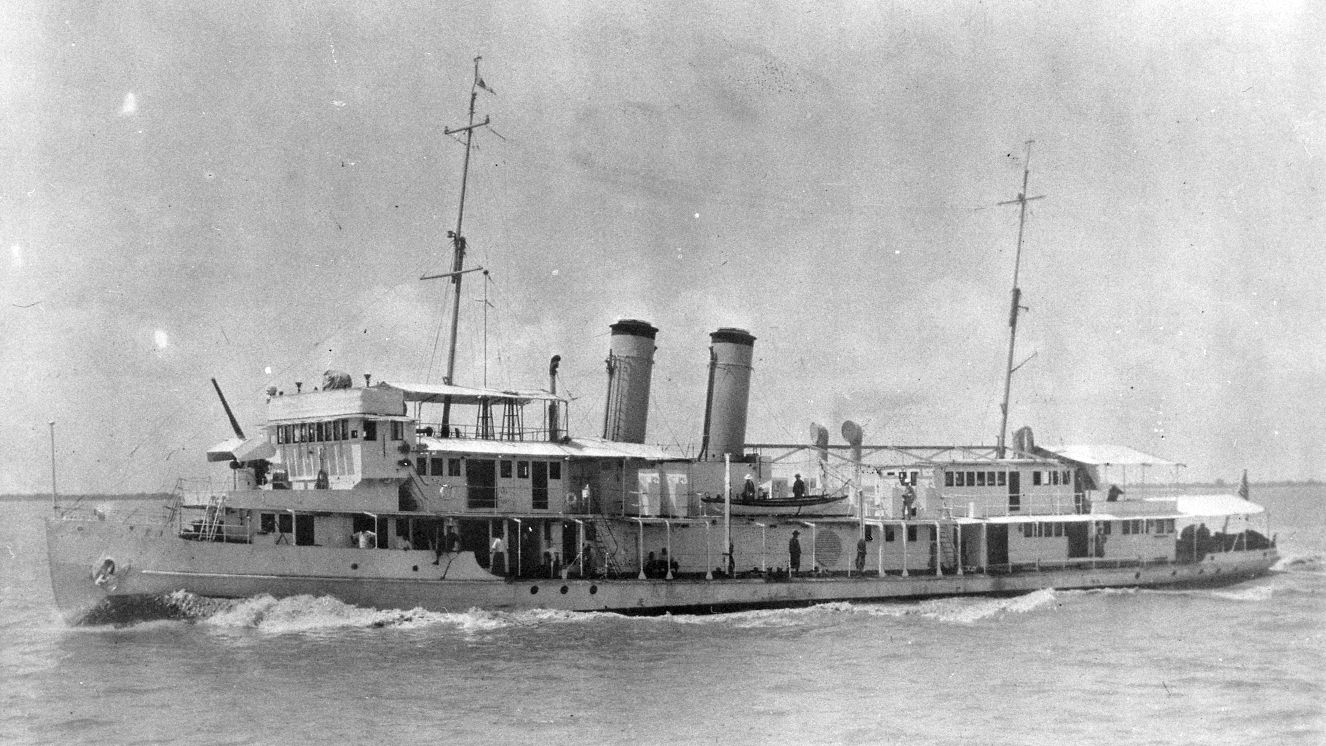BATTLE OF TRENTON: WASHINGTON'S REVOLUTIONARY WAR TURNING POINT

On December 26, 1776, General George Washington decided to take a big risk for the sake of winning the war. He led his tired army across the freezing Delaware River during a Christmas night snowstorm. They marched quietly for ten miles to reach Trenton, New Jersey, where Hessian soldiers were stationed.
The Hessians didn't expect this surprise attack during the raging snow, so Washington's plan caught them off guard. This began the Battle of Trenton, which would turn out to be a key moment in the American Revolution. The legacy of leadership that Washington demonstrated in the battle immortalized him as one of the most significant figures in American history.
Washington's Troop Movement to Trenton
General George Washington led the Continental Army to Trenton, New Jersey, right after his well-known Delaware River crossing. The army's forces consisted of men, carts, horses, and artillery. Washington rode up and down the column, pushing his soldiers to continue to march for battle. The weather was worse than it had been when they crossed the river, but they succeeded nevertheless.
Washington's confidence in his surprise attack allowed the Continental Army to keep up despite the cold and rainy weather. Many soldiers had the tenacity and resolve to confront the Hessian forces in Trenton. Even though many of them lacked appropriate winter attire, they improvised and wrapped rags over their feet to ward off the cold.

Battle of Trenton 1776: Key Events and Strategies
On the morning of December 26, 1776, just after eight o'clock, the Continental Army began its attack on the city. Washington himself led the middle charge as three columns marched through deep snow. Artillery started to fire as the men moved forward. At the same time, the Hessians were hastily called by German drums to prepare for battle. He was surprised to find that Washington had kept the element of surprise.
Three Hessian regiments immediately formed ranks and fled from their quarters, ready to combat, as soon as the firing started. The Continental Army entered the city at two different sites as the Hessians gathered. Nathanael Greene and Washington approached from the north while John Stark marched in from the west along River Road.
Hessian lieutenant Andreas von Wiederholdt misinformed Colonel Johann Rall that Trenton was encircled by the Continental Army and that there was no escape path. Rall made the decision to fight Washington inside the city rather than flee across Assunpink Creek. This proved to be expensive because Washington's forces were on the highest ground in the city and could see every move Rall made.
Washington repeatedly stopped Rall's attempts to outflank the Continentals. Washington's army eventually defeated the Hessians. Many of Rall's soldiers broke ranks and fled the fighting when he was mortally wounded. Rall's unit was normally highly disciplined, but without their commander, they were lost and confused. They withdrew and turned themselves in in an orchard east of Trenton.
Post-Battle Impact on Revolutionary War
Washington achieved a strategic victory even if many Hessians managed to escape Trenton. The Continental Army seized around a hundred Hessian officers and men in just one hour of combat, along with a substantial amount of muskets, bayonets, swords, and cannons. The general immediately turned his attention to what to do after Washington gave his forces orders to treat the Hessian prisoners humanely.
In Trenton, Washington gathered all of his officers to decide whether to defend their ground, attack another garrison, or withdraw across the Delaware River. Given the state of his force, Washington concluded that returning to their camps on the other side of the river was their best option, given the situation.
Soldiers were worn out when the Continental Army set up camp again on the Pennsylvania side of the Delaware River. Washington was aware that his army had surpassed all expectations at Trenton and that they still had a lot of work ahead of them. However, he also understood that there was a greater danger of doing nothing. This is why Washington focused on setting up a second engagement, this time at Princeton.

Trenton's Role in Revolutionary War Post-Occupation
Washington had to deal with over 900 Hessians and their families who had been captured after winning the First Battle of Trenton. They marched back to Johnson's Ferry since they couldn't be moved to Pennsylvania due to the Delaware River's ice. On parole, a few Hessians who were ill or injured were left in Trenton.
The town suffered damage during the fighting, and rehabilitation was a bit slower because residents had evacuated. The area later became a key base for the Continental Army despite the fact that the destruction was greater than that of the Battle of Trenton.
Read next:
BY ALLISON KIRSCHBAUM
Veteran, Military History & Culture Writer at VeteranLife
Navy Veteran
Allison Kirschbaum is a Navy Veteran and an experienced historian. She has seven years of experience creating compelling digital content across diverse industries, including Military, Defense, History, SaaS, MarTech, FinTech, financial services, insurance, and manufacturing. She brings this expertis...
Credentials
Expertise
Allison Kirschbaum is a Navy Veteran and an experienced historian. She has seven years of experience creating compelling digital content across diverse industries, including Military, Defense, History, SaaS, MarTech, FinTech, financial services, insurance, and manufacturing. She brings this expertis...



